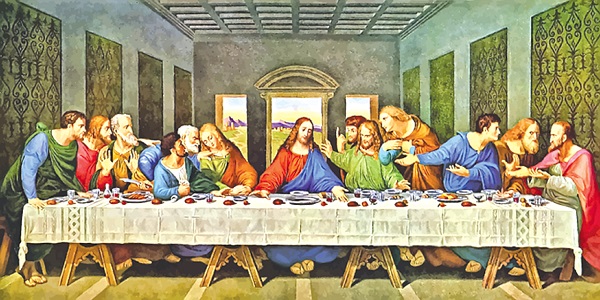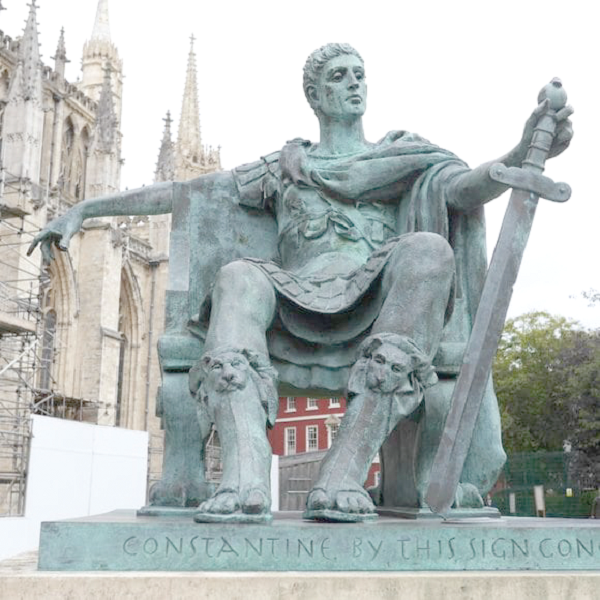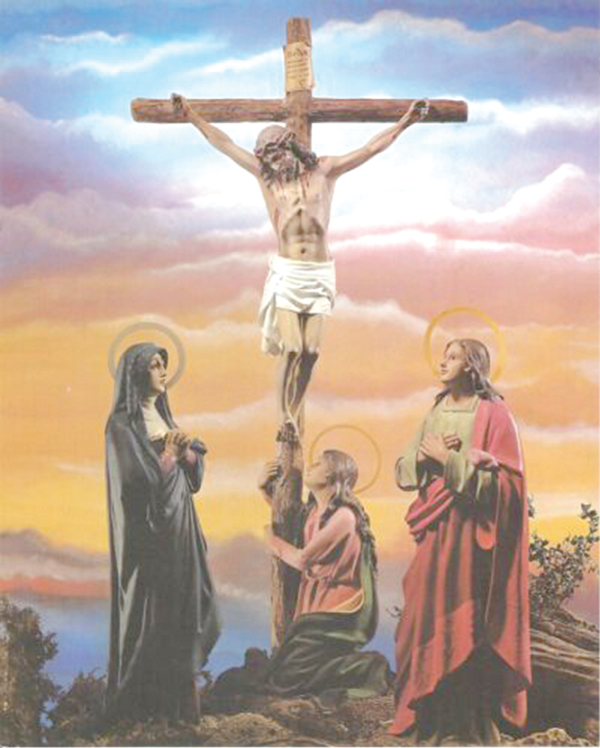
Is Easter celebration pagan or Christian?
Easter is a festival and holiday celebrated by millions of people around the world. Its origin or roots may have affiliation with ancient pagan customs and traditions according to various historical accounts.
Advertisement
It is worthy to note that even among those who maintain that Easter has pagan roots, there is some disagreement over which pagan tradition the festival emerged from.
However, the New Unger’s Bible Dictionary states that: “The word Easter is of Saxon origin, Eastra, the goddess of spring, in whose honour sacrifices were offered each year about Passover (commemoration of the story of the Israelites' departure from ancient Egypt).
By the eighth century, Anglo–Saxons (a cultural group that inhabited much of what is now England in the Early Middle Ages) had adopted the name to designate the celebration of Christ’s resurrection.”
For Christians who honour the resurrection of Jesus from the dead, described in the New Testament of the Holy Bible as having occurred three days after his crucifixion at Calvary, its commemoration does not rest on the title of the celebration, but on its content and significance.
About 2,000 years ago, Jesus Christ, in his early 30s, sacrificed his life to save mankind from sin, so that mankind would have a good relationship with God the Creator.
The commemoration of His death and subsequent resurrection became known as Easter, a sacred event celebrated by Christians worldwide.

It is typically marked with church services that start with the celebrations of the Chrism Mass or Mass of the Oils on Wednesday and Holy Thursday with the Passover, particularly in the case of Roman Catholics.
One of the major highlights is observed on Good Friday, the day Jesus died.
Christians believe that through Jesus Christ’s death, burial and resurrection, He paid the penalty for sin and by that purchased for all who believe in Him, eternal life.
For the purposes of this write-up, however, it will be worthwhile to delve into some of the different schools of thought and various accounts about the origin of Easter.
Schools of thought
One theory that has been put forward is that the Easter story of crucifixion and resurrection is symbolic of rebirth and renewal and retells the cycle of the seasons, the death and return of the sun.
According to a Lecturer of Theology and Religious Studies at Seattle University, and Presbyterian minister, Dr Tony Nugent, the Easter story comes from the Sumerian legend of Damuzi (Tammuz) and his wife Inanna (Ishtar). It is an epic myth called “The Descent of Inanna” found inscribed on cuneiform clay tablets dating back to 2100 BC (Before Christ).
When Tammuz dies, Ishtar is grief–stricken and follows him to the underworld. In the underworld, she enters through seven gates, and her worldly attire is removed. "Naked and bowed low" she is judged, killed and then hung on display. In her absence, the earth loses its fertility, crops cease to grow and animals stop reproducing. Unless something is done, all life on earth will end.
After Inanna has been missing for three days, her assistant goes to other gods for help. Finally, one of them Enki, creates two creatures who carry the plant of life and water of life down to the underworld, sprinkling them on Inanna and Damuzi, resurrecting them, and giving them the power to return to the earth as the light of the sun for six months.
After the six months are up, Tammuz returns to the underworld of the dead, remaining there for another six months, and Ishtar pursues him, prompting the water god to rescue them both. Thus were the cycles of winter death and spring life.

Dr Nugent is however quick to point out that drawing parallels between the story of Jesus and the epic of Inanna “doesn't necessarily mean that there wasn't a real person, Jesus, who was crucified, but rather that, if there was, the story about it is structured and embellished in accordance with a pattern that was very ancient and widespread.”
The lecturer points out that the story of Inanna and Damuzi is just one of a number of accounts of dying and rising gods that represent the cycle of the seasons and the stars.
Related account
In another account which is quite related to Dr Nugent's narration, Easter was originally a celebration of Eostre, goddess of Spring, otherwise known as Ostara, Austra, and Eastre. One of the most revered aspects of Eostre for both ancient and modern observers is a spirit of renewal.
Celebrated at Spring Equinox on March 21, Ostara marks the day when light is equal to darkness, and will continue to grow.
Advertisement
As the bringer of light after a long dark winter, the goddess was often depicted with the hare, an animal that represents the arrival of spring as well as the fertility of the season.
Most analyses of the origin of the word ‘Easter’ agree that it was named after Eostre, an ancient word meaning ‘spring’, though many European languages use one form or another of the Latin name for Easter, Pascha, which is derived from the Hebrew word Pesach, meaning Passover.
Pagan origins
The usual argument for the pagan origins of Easter is also based on a comment made by an English monk and Historian, Venerable Bede (673-735). He wrote the first history of Christianity in England, and he is one of the main sources of knowledge about early Anglo-Saxon culture.
In one of his works (On the Reckoning of Time, c. 730), Bede wrote this:
“In olden times the English people — for it did not seem fitting that I should speak of other nations' observance of the year and yet be silent about my own nation's — calculated their months according to the course of the moon. Hence, after the manner of the Greeks and the Romans, [the months] take their name from the Moon, for the Moon is called mona and the month monath. The first month, which the Latins call January, is Giuli; February is called Solmonath; March Hrethmonath; April, Eosturmonath”.
Advertisement

Therefore, Eosturmonath was named after Eostre, a West Germanic pagan goddess of fertility and rebirth. The name “Easter” was therefore derived from “Eostre”.
The origins of Easter are wrapped up in a celebration of seasonal renewal that has taken place in numerous cultures for thousands of years around the time of the Spring Equinox-( happens around March 21 when day and night are approximately of equal length).
Egg customs
In Germanic mythology, it is said that Ostara healed a wounded bird she found in the woods by changing it into a hare. Still partially a bird, the hare showed its gratitude to the goddess by laying eggs as gifts.
The Encyclopedia Britannica clearly explains the pagan traditions associated with the egg: “The egg as a symbol of fertility and of renewed life goes back to the ancient Egyptians and Persians, who had also the custom of colouring and eating eggs during their spring festival.”
Advertisement
In many Christian traditions, the custom of giving eggs at Easter celebrates new life. Christians remember that Jesus, after dying on the cross, rose from the dead, showing that life could win over death.
For Christians, the egg is a symbol of the tomb in which the body of Jesus was placed, while cracking the egg represents Jesus' resurrection. In the Orthodox tradition, eggs are painted red to symbolise the blood Jesus shed on the cross.
Regardless of the very ancient origins of the symbol of the egg, most people agree that nothing symbolises renewal more perfectly than the egg – round, endless, and full of the promise of life.
Passover
It is also worth mentioning that Easter is associated with the Jewish festival of Passover through its symbolism and meaning, as well as its position in the calendar. Some early Christians chose to celebrate the resurrection of Jesus on the same date as Passover, which reflects Easter having entered Christianity during its earliest Jewish period. Evidence of a more developed Christian festival of Easter emerged around the mid-second century.
In 325 AD, (Anno Domini, Latin words meaning in the year of the lord) a Roman Emperor Flavius Valerius Constantinus a.k.a Constantine the Great convened a meeting of Christian leaders to resolve important disputes at the Council of Nicaea. Since the church believed that the resurrection took place on a Sunday, the Council determined that Easter should always fall on the first Sunday after the first full moon following the spring equinox. Easter has since remained without a fixed date but proximate to the full moon, which coincided with the start of Passover.
While there are distinct differences between the celebrations of Passover and Easter, both festivals celebrate rebirth – in Christianity through the resurrection of Jesus, and in Jewish traditions through the liberation of the Israelites from slavery.
Different dates
It is important to note that the date upon which Easter is held varies from year to year, and corresponds with the first Sunday following the full moon after the March equinox (when day and night are of approximately equal length).
It occurs on different dates around the world, since western churches use the Gregorian calendar (introduced in 1582 by Pope Gregory XIII as a reform of the Julian calendar), while eastern churches use the Julian calendar.
In 2022 for instance Easter Sunday (resurrection day) fell on April 17 but this year it will be celebrated on Sunday April 9.
For one thing, whether the celebration is seen as paganism or not, it is immaterial at the moment because its significance depends on what the individual believes in and what works for him or her no matter his or her religious affiliation.




